-
 Bitcoin
Bitcoin $78,376.0795
-4.77% -
 Ethereum
Ethereum $1,548.8063
-11.55% -
 Tether USDt
Tether USDt $0.9994
-0.02% -
 XRP
XRP $1.8818
-9.04% -
 BNB
BNB $551.7480
-4.69% -
 USDC
USDC $1.0000
0.01% -
 Solana
Solana $106.1095
-7.66% -
 Dogecoin
Dogecoin $0.1468
-8.95% -
 TRON
TRON $0.2275
-4.95% -
 Cardano
Cardano $0.5707
-8.85% -
 UNUS SED LEO
UNUS SED LEO $8.9335
-1.49% -
 Toncoin
Toncoin $3.0253
-8.20% -
 Chainlink
Chainlink $11.2802
-7.86% -
 Stellar
Stellar $0.2302
-8.79% -
 Avalanche
Avalanche $16.4569
-4.24% -
 Shiba Inu
Shiba Inu $0.0...01128
-5.14% -
 Sui
Sui $2.0097
-2.68% -
 Hedera
Hedera $0.1463
-4.76% -
 MANTRA
MANTRA $6.2909
1.82% -
 Polkadot
Polkadot $3.5783
-7.89% -
 Bitcoin Cash
Bitcoin Cash $271.3725
-8.06% -
 Dai
Dai $1.0000
0.00% -
 Litecoin
Litecoin $70.0284
-11.01% -
 Ethena USDe
Ethena USDe $0.9986
-0.03% -
 Bitget Token
Bitget Token $4.0832
-5.49% -
 Pi
Pi $0.5780
-5.55% -
 Monero
Monero $201.8656
-4.22% -
 Hyperliquid
Hyperliquid $10.9226
-3.72% -
 Uniswap
Uniswap $5.1124
-8.67% -
 OKB
OKB $51.1549
-4.68%
Does USDT rely on bank custody?
USDT maintains stability by pegging to the USD, with bank custody playing a crucial role in holding reserves, though it introduces risks like bank failures and regulatory scrutiny.
Apr 06, 2025 at 03:00 pm
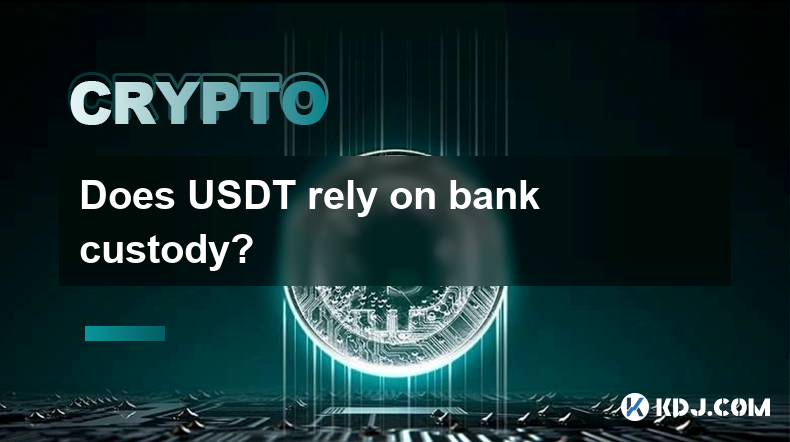
Tether (USDT) is a widely used stablecoin in the cryptocurrency market, designed to maintain a stable value by pegging it to the US dollar. One of the critical aspects of understanding USDT is its reliance on bank custody. This article will delve into the mechanisms behind USDT's operations, specifically focusing on the role of bank custody in its ecosystem.
What is USDT and How Does it Work?
USDT, also known as Tether, is a type of cryptocurrency known as a stablecoin. Stablecoins aim to offer the benefits of digital currencies while maintaining a stable value. USDT achieves this stability by being pegged to the US dollar on a 1:1 basis. For every USDT in circulation, Tether Ltd., the company behind USDT, claims to hold an equivalent amount in US dollars or equivalent assets.
The operation of USDT involves several steps:
- Issuance: When a user wants to buy USDT, they typically send US dollars to Tether Ltd., which then issues an equivalent amount of USDT.
- Redemption: Conversely, when a user wants to convert USDT back to US dollars, they send their USDT to Tether Ltd., which then returns the equivalent amount in US dollars.
- Maintenance: Tether Ltd. ensures that the total value of USDT in circulation matches the total value of their reserves.
The Role of Bank Custody in USDT
Bank custody plays a significant role in the operations of USDT. Tether Ltd. uses banks to hold the US dollars that back the USDT in circulation. This is crucial for maintaining the peg and ensuring that users can redeem their USDT for US dollars at any time.
Tether Ltd. has historically used various banks to hold its reserves. These banks act as custodians, safeguarding the funds that back USDT. The use of bank custody provides a layer of security and trust, as banks are regulated institutions with established protocols for handling large sums of money.
However, the reliance on bank custody also introduces certain risks. If a bank holding Tether's reserves faces financial difficulties or regulatory issues, it could impact Tether's ability to maintain its peg. Additionally, the transparency of Tether's bank relationships has been a point of contention, with some users and regulators calling for more detailed disclosures about which banks are involved and the exact nature of their agreements.
How Tether Manages Its Reserves
Tether Ltd. manages its reserves through a combination of cash and cash equivalents, as well as other assets. According to Tether's attestations, a significant portion of its reserves is held in cash and bank deposits. These cash reserves are typically held in banks, which underscores the importance of bank custody in Tether's operations.
In addition to cash, Tether also holds other assets such as commercial papers, treasury bills, and other securities. These assets are also managed through financial institutions, which again highlights the role of bank custody. The diversification of assets helps Tether to maintain liquidity and stability, but it also means that the company's operations are closely tied to the financial system and the institutions within it.
Transparency and Audits
Transparency has been a significant issue for Tether. The company has faced criticism for not providing regular, comprehensive audits of its reserves. Instead, Tether has opted for attestations, which are less rigorous than full audits. These attestations confirm that Tether holds sufficient reserves to back the USDT in circulation, but they do not provide detailed information about the composition of those reserves or the specific banks involved.
Tether's reliance on bank custody is evident in its attestations, which often mention the use of bank deposits as part of its reserve holdings. However, the lack of detailed information about which banks are involved and the exact nature of their agreements has led to ongoing debates about the true level of transparency and the potential risks associated with Tether's operations.
Risks and Challenges
The reliance on bank custody introduces several risks and challenges for Tether. One of the primary risks is the potential for bank failures or financial instability. If a bank holding Tether's reserves were to face financial difficulties, it could impact Tether's ability to maintain its peg and fulfill redemption requests.
Another challenge is regulatory scrutiny. Banks are subject to various regulations, and any changes in these regulations could affect Tether's ability to use bank custody effectively. Additionally, regulators have expressed concerns about the transparency and stability of stablecoins like USDT, which could lead to increased oversight and potential restrictions on Tether's operations.
Alternatives to Bank Custody
While bank custody is a significant part of Tether's operations, the company has explored alternatives to mitigate risks and enhance stability. One such alternative is the use of decentralized finance (DeFi) platforms. Tether has started to hold some of its reserves in DeFi protocols, which offer a different approach to custody and asset management.
DeFi platforms operate on blockchain networks and are not subject to the same regulatory constraints as traditional banks. By diversifying its reserves across both traditional banks and DeFi platforms, Tether aims to reduce its reliance on any single type of custody and enhance the overall resilience of its operations.
The Future of USDT and Bank Custody
The future of USDT and its reliance on bank custody will likely be shaped by several factors, including regulatory developments, market dynamics, and technological advancements. As the cryptocurrency market continues to evolve, Tether may need to adapt its approach to custody to meet changing demands and mitigate risks.
Regulatory changes could play a significant role in shaping Tether's use of bank custody. Increased scrutiny and potential new regulations could force Tether to modify its relationships with banks or explore alternative custody solutions. Additionally, advancements in blockchain technology and DeFi could provide new opportunities for Tether to diversify its reserves and enhance the stability of USDT.
Common Questions Related to USDT and Bank Custody
Q: What is the primary role of bank custody in USDT's operations?
A: The primary role of bank custody in USDT's operations is to hold the US dollars and other assets that back the USDT in circulation. Banks act as custodians, safeguarding these funds and ensuring that Tether can maintain its peg and fulfill redemption requests.
Q: How does Tether ensure the stability of USDT?
A: Tether ensures the stability of USDT by maintaining a reserve of US dollars and other assets that matches the total value of USDT in circulation. This reserve is held in banks and other financial institutions, which helps to maintain the peg and ensure liquidity.
Q: What are the risks associated with Tether's reliance on bank custody?
A: The risks associated with Tether's reliance on bank custody include potential bank failures, financial instability, and regulatory changes. If a bank holding Tether's reserves faces difficulties, it could impact Tether's ability to maintain its peg and fulfill redemption requests.
Q: How transparent is Tether about its use of bank custody?
A: Tether has faced criticism for its lack of transparency regarding its use of bank custody. While the company provides attestations confirming that it holds sufficient reserves, it does not disclose detailed information about the specific banks involved or the exact nature of their agreements.
Q: What alternatives to bank custody has Tether explored?
A: Tether has explored alternatives to bank custody, including the use of decentralized finance (DeFi) platforms. By holding some of its reserves in DeFi protocols, Tether aims to diversify its custody solutions and enhance the overall resilience of its operations.
Q: How might regulatory changes impact Tether's use of bank custody?
A: Regulatory changes could significantly impact Tether's use of bank custody. Increased scrutiny and potential new regulations could force Tether to modify its relationships with banks or explore alternative custody solutions to comply with new requirements and mitigate risks.
Disclaimer:info@kdj.com
The information provided is not trading advice. kdj.com does not assume any responsibility for any investments made based on the information provided in this article. Cryptocurrencies are highly volatile and it is highly recommended that you invest with caution after thorough research!
If you believe that the content used on this website infringes your copyright, please contact us immediately (info@kdj.com) and we will delete it promptly.
- Dogecoin (DOGE) Price Surge Incoming? Analysts Point to Historical Patterns
- 2025-04-08 01:05:12
- Mutuum Finance (MUTM) Token Identified by Algorithms to Deliver Exponential Upside Before 2025
- 2025-04-08 01:05:12
- Which trending crypto tokens are making waves right now — and are they surging on substance or speculation?
- 2025-04-08 01:00:12
- Forgotten Playland, the Anticipated Multiplayer Party Game from Vermillion, is Officially Live
- 2025-04-08 01:00:12
- Dogecoin (DOGE) Price Analysis: DOGE is Trading at $0.1946 After a 4.01% Decrease in the Last 24 Hours. This Drop Indicates
- 2025-04-08 00:55:11
- The Meteoric Rise of BNB: A Projected $1.7 Trillion Market
- 2025-04-08 00:55:11
Related knowledge
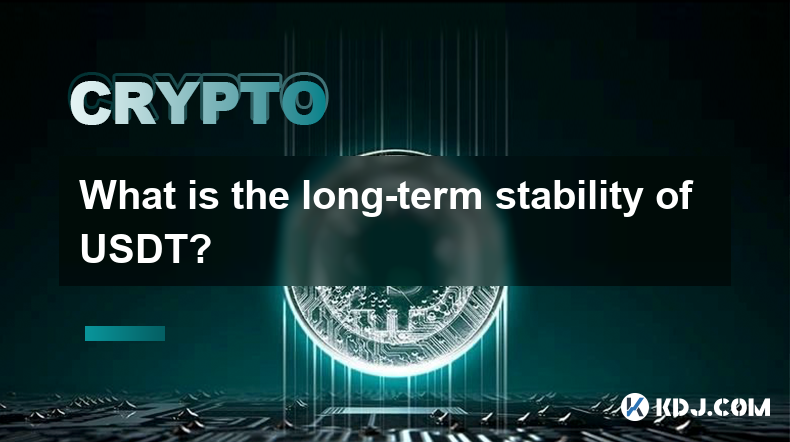
What is the long-term stability of USDT?
Apr 04,2025 at 10:28pm
The long-term stability of USDT, also known as Tether, is a topic of significant interest within the cryptocurrency community. USDT is a type of stablecoin, designed to maintain a stable value by being pegged to a reserve asset, typically the US dollar. The stability of USDT is crucial for its widespread use in trading, as a hedge against volatility, an...
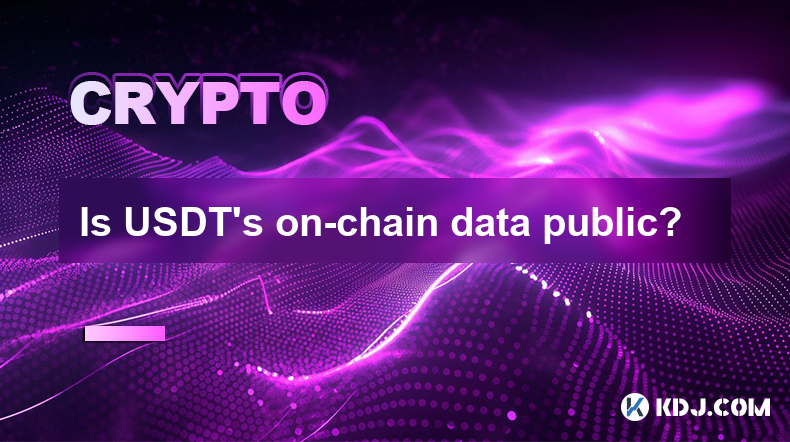
Is USDT's on-chain data public?
Apr 05,2025 at 08:49am
The transparency of USDT's on-chain data is a topic of significant interest within the cryptocurrency community. Tether, the company behind USDT, claims that its operations are transparent and that the on-chain data is publicly accessible. However, understanding the nuances of this data and how to access it can be challenging. This article will delve in...
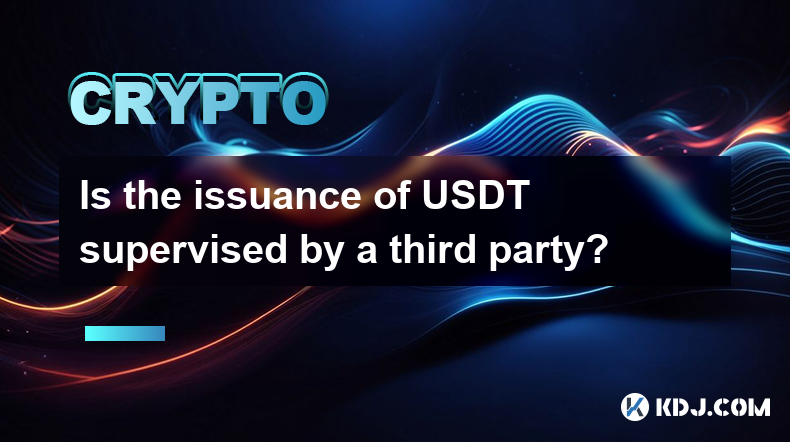
Is the issuance of USDT supervised by a third party?
Apr 06,2025 at 01:49pm
The issuance of USDT, also known as Tether, is a topic that often sparks curiosity and debate within the cryptocurrency community. Many wonder whether this stablecoin, which is pegged to the US dollar, is supervised by a third-party to ensure transparency and accountability. In this article, we will delve into the details of USDT's issuance process and ...

Does USDT rely on bank custody?
Apr 06,2025 at 03:00pm
Tether (USDT) is a widely used stablecoin in the cryptocurrency market, designed to maintain a stable value by pegging it to the US dollar. One of the critical aspects of understanding USDT is its reliance on bank custody. This article will delve into the mechanisms behind USDT's operations, specifically focusing on the role of bank custody in its ecos...
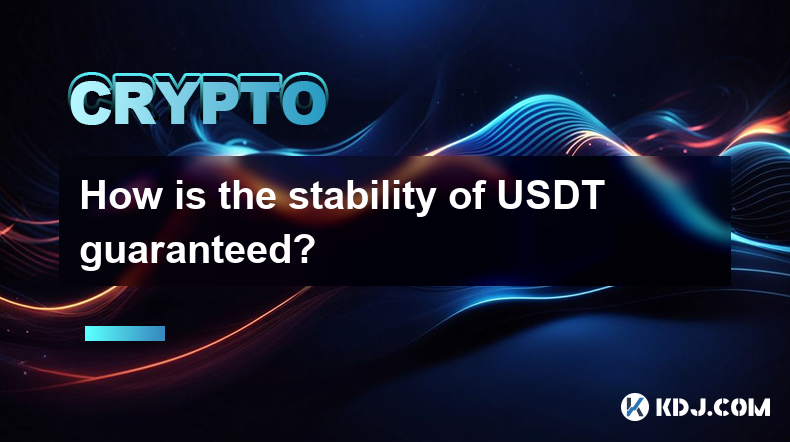
How is the stability of USDT guaranteed?
Apr 03,2025 at 06:00am
The stability of USDT, also known as Tether, is a critical aspect that underpins its role as a stablecoin in the cryptocurrency market. USDT is designed to maintain a 1:1 peg with the US dollar, which is achieved through a combination of mechanisms and practices. Understanding these elements is essential for anyone interested in the stability and reliab...
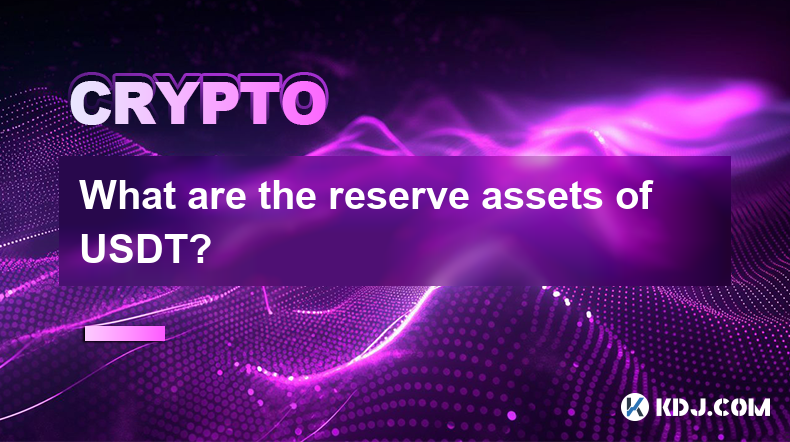
What are the reserve assets of USDT?
Apr 06,2025 at 10:56pm
The reserve assets of USDT, also known as Tether, are a crucial aspect of the stablecoin's operation and credibility. Tether Limited, the company behind USDT, claims that each USDT token is backed by an equivalent amount of reserve assets, primarily in the form of cash and cash equivalents. This backing is intended to ensure that USDT maintains a stable...

What is the long-term stability of USDT?
Apr 04,2025 at 10:28pm
The long-term stability of USDT, also known as Tether, is a topic of significant interest within the cryptocurrency community. USDT is a type of stablecoin, designed to maintain a stable value by being pegged to a reserve asset, typically the US dollar. The stability of USDT is crucial for its widespread use in trading, as a hedge against volatility, an...

Is USDT's on-chain data public?
Apr 05,2025 at 08:49am
The transparency of USDT's on-chain data is a topic of significant interest within the cryptocurrency community. Tether, the company behind USDT, claims that its operations are transparent and that the on-chain data is publicly accessible. However, understanding the nuances of this data and how to access it can be challenging. This article will delve in...

Is the issuance of USDT supervised by a third party?
Apr 06,2025 at 01:49pm
The issuance of USDT, also known as Tether, is a topic that often sparks curiosity and debate within the cryptocurrency community. Many wonder whether this stablecoin, which is pegged to the US dollar, is supervised by a third-party to ensure transparency and accountability. In this article, we will delve into the details of USDT's issuance process and ...

Does USDT rely on bank custody?
Apr 06,2025 at 03:00pm
Tether (USDT) is a widely used stablecoin in the cryptocurrency market, designed to maintain a stable value by pegging it to the US dollar. One of the critical aspects of understanding USDT is its reliance on bank custody. This article will delve into the mechanisms behind USDT's operations, specifically focusing on the role of bank custody in its ecos...

How is the stability of USDT guaranteed?
Apr 03,2025 at 06:00am
The stability of USDT, also known as Tether, is a critical aspect that underpins its role as a stablecoin in the cryptocurrency market. USDT is designed to maintain a 1:1 peg with the US dollar, which is achieved through a combination of mechanisms and practices. Understanding these elements is essential for anyone interested in the stability and reliab...

What are the reserve assets of USDT?
Apr 06,2025 at 10:56pm
The reserve assets of USDT, also known as Tether, are a crucial aspect of the stablecoin's operation and credibility. Tether Limited, the company behind USDT, claims that each USDT token is backed by an equivalent amount of reserve assets, primarily in the form of cash and cash equivalents. This backing is intended to ensure that USDT maintains a stable...
See all articles





















































































